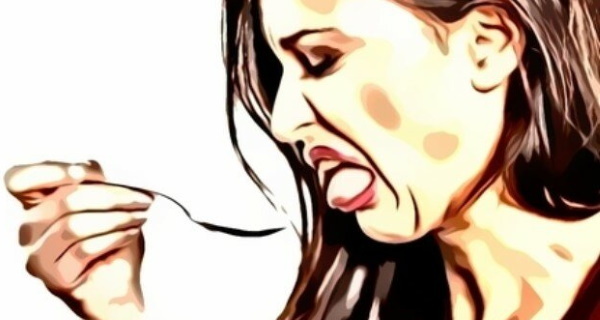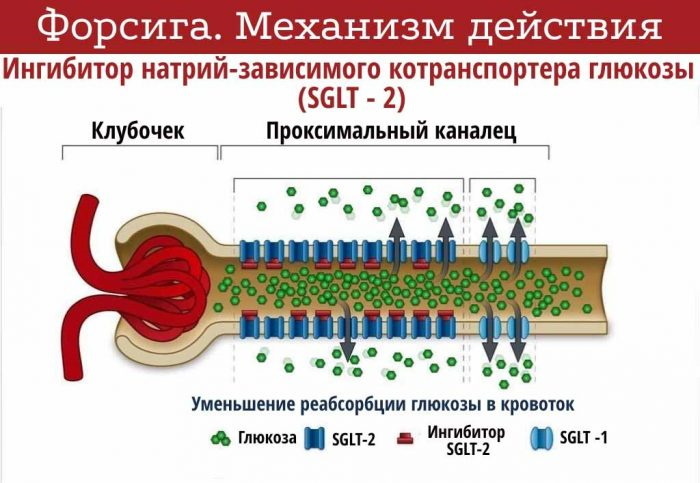Vaccines are still in the early months of life. It does not guarantee complete protection from infection, but vaccinated children the disease is much milder. Doctors recommend that parents in caring for children, sick with whooping cough, as much as possible to protect them from any of the factors that trigger the appearance of choking cough.

What it is?
Whooping cough - a disease of an infectious nature that affects the upper respiratory tract. Severity of disease in children under the age of six months can lead to severe complications. Whooping cough can be transmitted by sneezing, coughing, talking, the agent is a wand - Bordetella pertussis.
It will help to identify specific analysis. In the course of it secretes into the bloodstream a special toxin lifecycle. It irritates the mucous membrane of the larynx and bronchi, causing barking, dry cough, catarrh. Outside the body of the bacteria dies quickly.
What happens in the body after infectionI am?
Bordetella get on the mucosa of the upper respiratory tract. Propagation occurs in cells columnar epithelium. The causative agent of "passes" on the small bronchi, bronchioles and alveoli. For pertussis, bacteremia is not typical. The pathogenesis of the disease the toxin plays a major role. It affects the mucous membranes of the respiratory tract, resulting in coughing.
Nerve receptors airway mucosa permanently chafe toxin, due to a cough that acquires character spasmodic attacks, time that the breathing rhythm is disturbed, as they say in science inspiratory pauses. Violation of the respiratory rhythm with spasmodic cough (apnea), leading to the breakdown of pulmonary ventilation and hemodynamics. The process is accompanied by hypoxia and hypoxemia.
In the development of the disease is important oxygen deficiency. In the cerebral cortex there are disturbances of blood circulation that leads to focal changes and seizures. The medulla is formed persistent excitation focus. By decreasing abnormal impulses from the airway occurs slow fading dominant focus of excitation in the CNS.
Airways susceptible to most pathological changes. In the lungs occur pronounced circulatory disorders. Observed swelling peribronchial, perivascular and interstitial lung tissue. Disorders of blood circulation are observed in the central nervous system, kidneys, liver and so forth.
Parakoklyush
At its downstream parakoklyush resembles an easy form of pertussis. What is parakoklyush? This is also an acute bacterial infection, but it takes much more easily and without dangerous complications.
For parakoklyusha characterized by the following symptoms:
- normal body temperature;
- prolonged cough that can not be treated;
- a slight increase in white blood cell count;
- complete absence of intoxication, or in rare cases, a minor weakness.
In the treatment of parakoklyusha mostly recommended home-mode and the appointment of symptomatic medication. In severe cases, treatment is not different from the treatment of pertussis infection. Used antibiotics, antipsychotics, anticonvulsants medications.
parakoklyusha coli was discovered a little later - in 1937. Disease-causing bacterium Bordetella pertussis. route of transmission - airborne from the patient to health. Microorganism affects the same structure as the whooping cough.
The first signs of whooping cough in a child
When pertussis begins - the same symptoms as a cold:
- The patient complains of chills, muscle pain, headache, general weakness.
- Mucosal edema is observed and the appearance of small rhinitis.
- Zev is red, skin pale.
- The temperature rises, there is a tachycardia - rapid heartbeat.
- The person becomes sluggish, loss of appetite.
According occurs paroxysmal stage of the development of the disease. It joins a dry cough, spasmodic form. He did not treat antitussives. One must know how to distinguish the symptoms of whooping cough in a child from a common cold in time to start a targeted treatment.

symptoms of pertussis
The incubation period (when the causative agent of whooping cough has already penetrated into the body of the child, but the symptoms have not yet appeared) is, according to various estimates, from 2 to 20 days, on average - for about a week.
Pertussis begins actually at the end of incubation, which is characterized by cyclical during a succession of three periods of the disease:
- Premonitory. This is the period associated with the emergence of harbingers of whooping cough: dry, gradually growing (especially at night), cough, mild fever. The child feels good. But this state lasts 1-2 weeks without changing.
- Spasmodic. Gradually the cough becomes paroxysmal in nature - spasmodic period begins - the height of the disease, fraught with the development of complications, especially dangerous for infants. Bouts of coughing in whooping cough is very distinctive, there is nothing like it in any other diseases. A child in one exhale "Sunset" by a series of aftershocks cough, after which there is a whooping, whistling breath (reprise), then exhale - again, coughing, etc. attack from cough series shocks intermittent reprises may last for several minutes and terminates discharge of the viscous transparent or whitish sputum, typical at the end of vomiting attack. Possible involuntary urination or defecation. Characterized by the appearance of a child during a cough attack: it strongly sticks out his tongue, face becomes puffy, red, and then becomes maroon and bluish lips turn blue, eyes streaming tears. Swollen veins in the neck, increased sweating. Often, because of surges occur hemorrhages in the sclera, face and upper body (small red spots on the skin and burst into vials whites of the eyes). The duration of spasmodic period - from 2 weeks to a month. If there are no complications, it is an attack of coughing normal state of children, not the temperature is increased. Children are active, play, to eat do not give up. In severe forms of pertussis seizure frequency may reach 30 or more per day, because of their sleep disturbance, shortness of breath, decreased appetite, often complications develop. A person constantly swollen, with hemorrhages in the skin and the sclera.
- Reverse development (resolution). The cough gradually weakened, the attacks appear even 10 days, a pause between them increases. Then severe symptoms disappear. The child is 2-3 weeks a little cough, but cough, normal.
- Convalescence period (recovery). This is the longest period in the clinical course of pertussis, which lasts from 2 months up to six months. At this time, the cough is virtually absent, but may return the periodic bouts of whooping cough, because of the conservation of the focus of excitation in the cough center of the medulla oblongata.
In infants, painful attacks do not last so long, but after a few movements cough may stop breathing. Cerebral anoxia becomes the cause of nervous system diseases, underdevelopment. Possible even death.
Whooping cough
How to identify whooping cough in a child - by the presence of the characteristic cough. He begins to show only after two weeks of the first symptoms. The cough gradually increases, becoming more intense and frequent. Especially the frequent attacks of the night, they interfere with sleeping child, causing hypoxia. The attack consists of several shocks cough and wheezing prolonged inhalation. The day may be from 3 to 45 such cases, end they release small amounts of glassy sputum or vomiting.
Cough dangerous for infants. In children 6 months during an attack can stop breathing, which can result in death. It is important that during his illness the baby was in a medical facility where he can help immediately. These severe coughing attacks cause bleeding in the mucous membranes. Burst capillaries in the eyes, on the neck of the baby having bruises.
Diagnostics
The diagnosis of pertussis is exposed only on the basis of positive results of a specific study, which includes:
- Serological diagnosis is based on determination of the antibody titer to increase pertussis bacteria using agglutination (PA) or enzyme immunoassay (EIA).
- Bacteriological examination by seeding material on a nutrient medium, followed by cultivation and identification of the causative agent.
To determine the structural changes and the presence of hypoxia (insufficient oxygen supply in blood and tissues of the body), apply additional instrumentation and laboratory techniques research:
- General blood and urine tests.
- Chest X-ray or CT scan.
- Determination of the blood oxygen saturation (determining the presence of hypoxia).
- Blood chemistry.
Such diagnostic methods allow to assess the degree of structural and functional abnormalities in the body, which will help determine the further treatment tactics.
treatment of pertussis
In infants, pertussis treatment is carried out in a hospital. Also hospitalized patients with severe disease and dangerous complications.
Therapy is complex, using multiple approaches to how to treat whooping cough:
- Causal therapy - prescribe antibiotics that kill the body wand pertussis - erythromycin, roxithromycin or Augmentin in the age dosages.
- Pathogenetic therapy - involves the use of sedatives and anticonvulsant drugs that inhibit agitation in the cough center of the medulla oblongata - seduksen, sibazon, chlorpromazine.
- Symptomatic therapy - the aim is to reduce the intensity of coughing via antitussives means (Pertussin), physiotherapy, massage and therapeutic breathing exercises during convalescence.
Home treatment possible under milder forms of the disease, subject to strict performance of medical prescriptions. On the question of whether to do inhalations with whooping cough, simple answer is no. They may conduct special aerosols in the hospital under medical supervision, so as not to provoke an attack.
Also, special attention is paid to the regime:
- Be sure to make your child comfortable conditions. Subdued light, the silence, the absence of intruders reduce the number of attacks and thereby facilitate the patient's condition.
- Power fractional, frequent, it is desirable to maximize crushed. Since the meal and its active chewing can provoke an attack, and then vomiting.
- Wet cleaning and ventilation of the room.
- Be sure to walk! Especially if the window is in the fall or winter weather. Cool, moist air in this case is a must. Sputum will then be dry and not stagnate, then forming an excellent environment for pneumonia pathogens. It will be thinner and will be easier to move away.
Tip! While walking to avoid contact with other children. If join other infection, the risk of complications will increase tenfold.

Folk remedies
In the treatment of whooping cough in children in the home allowed the use of folk remedies to relieve symptoms of the disease:
- rubbing the chest and back fat (badger or goat) is used to improve blood flow in the respiratory organs;
- warm milk with the addition of cocoa butter or conventional facilitates coughing and throat softens;
- decoction of rosemary (a tablespoon per cup of water) to accelerate expectoration.
- use instead of tea decoction of chamomile, lime contribute to the rapid removal of toxins from the body;
- Inhalation of boiled potatoes or herbal infusions;
- ingestion of garlic or onion juice to improve the immune system;
Traditional medicines are used only as an adjunct to medical therapy. Each method should be negotiated with the attending physician.
Complications of whooping cough in a child
One of the serious complications of whooping cough is pneumonia, which is triggered either by the wand of pertussis, or joined by a bacterial infection. It may also develop nosebleeds, sore throat, false croup, gryzhi- inguinal or umbilical. In severe disease in young children, there are cases of encephalopathy, seizures.

prevention
The following activities (secondary prevention) is carried out in the hearth of infection:
- Isolation of the patient (refusal to attend kindergarten, school) for 25 days.
- Quarantine 2 weeks for unvaccinated / uninfected children.
- The survey exposed to a sick child in the carriage of persons pertussis bacillus.
- Introduction to contact with sick children immunoglobulin and antibiotics (even if the infection is much easier during the illness).
The only effective primary prevention (prevention of disease) is the DTP vaccination according to age schedule - three times up to 6 months and a booster dose at 18 years. Grafting efficiency is 70-80%.



